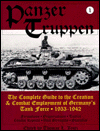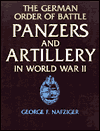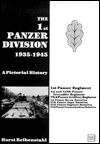|
The
Kradschuetzen in Panzer-Division before Polish Campaign. From
the very beginning when the first experimental Panzer-Division founded
in 1934 there was a Schuetzen-Brigade (motorized rifle brigade) with one
leichte Schuetzen-Regiment (motorized light rifle regiment) and one Kradschuetzen-Bataillon
(motorcycle rifle battalion) as motorized infantry units to support two
Panzer-Regiments within the Panzer-Division. The riflemen could ride on
their motorcycle with excellent speed in pursuing retreating enemy or
searching enemy weak spot and they could also dismount from their motorcycle
quickly and fight on ground effectively. Thus they could play dual roles
as motorcycle rifleman and tactical reconnaissance. This reflected on
the formation of Schuetzen-Brigade (motorized rifle brigade) and Aufklaerung-Abteilung
(mot) (motorized reconnaissance battalion) in the first three Panzer-Divisions
formed in 1935. Besides the organic motorcycle rifle battalion in he motorized
rifle brigade, there was one motorcycle rifle company in each motorized
rifle battalion and motorized reconnaissance battalion. The 4. and 5.
Panzer-Divisions raised in 1938 did have slight different in the formation
of their motorized rifle units. The 4. Panzer-Division had only Schuetzen-Regiment
12 and there was no motorcycle rifle company in the regiment. The only
motorcycle reconnaissance company in the division belonged to the Aufklaerung-Abteilung
(mot) 7. The 5. Panzer-Division had Schuetzen-Regiment 12 and 13, there
was one motorcycle rifle company in each motorized rifle battalion. The
10. Panzer-Division raised in 1939 consisted solely of detached units.
The only motorcycle reconnaissance company in the division belonged to
the motorized reconnaissance battalion. The Panzer-Verband "Kempf"
raised in 1939 also consisted of detached units, including those from
Waffen-SS. The SS-Standarte "Der Fuehrer" (mot) (motorized SS
regiment "Der Fuehrer") had one motorcycle reconnaissance company
and the SS-Aufklaerung-Abteilung (mot) (SS motorized reconnaissance battalion)
also had two motorcycle reconnaissance companies. After the Polish Campaign,
the Panzer-Verband "Kempf" was amalgamated into the 10. Panzer-Division
and the Waffen-SS units returned to the SS-VT Division.
The
Kradschuetzen in leichte Division before Polish Campaign. The
creation of leichte Division was the result of the conceptional conflict
between Panzer and Kavallerie arms. The employment of the leichte Division
was like the former Heeres Kavallerie with the exception of decisive battles.
Their tasks included reconnaissance beyond the front lines, reconnaissance
attack against enemy reconnaissance units or advanced troops, screen the
front and flanks, conduct delaying actions, closing gaps, quickly occupying
important sectors and pursuing retreating enemy forces. The reconnaissance
became the major task of the leichte Division and that also became the
major role for motorcycle rifle units in the division. There were four
leichte Divisions formed in 1938. The 1. leichte Division had Kradschuetzen-Bataillon
6 under the 6. Schuetzen-Brigade and there was one motorcycle reconnaissance
company in the Aufklaerung-Abteilung (mot) 6. The 2. leichte Division
had one motorcycle reconnaissance battalion under the Aufklaerung-Regiment
(mot) 7. The 3. leichte Division had one motorcycle rifle battalion under
the Kavallerieschuetzen-Regiment 9 and one motorcycle reconnaissance companies
in each motorized reconnaissance battalion under the Aufklaerung-Regiment
(mot) 8. The 4. leichte Division had one motorcycle reconnaissance battalion
under the Aufklaerung-Regiment (mot) 9. The motorcycle rifleman played
a reconnaissance role in the leichte Division.
The
Kradschuetzen in Infanterie-Division (mot) before Polish Campaign.
There was no organic motorcycle rifle battalion in motorized infantry
division at that time. The only motorcycle rifle company in the division
belonged to the motorized reconnaissance battalion.
|






